Cornwall Days highlights creativity, culture and community
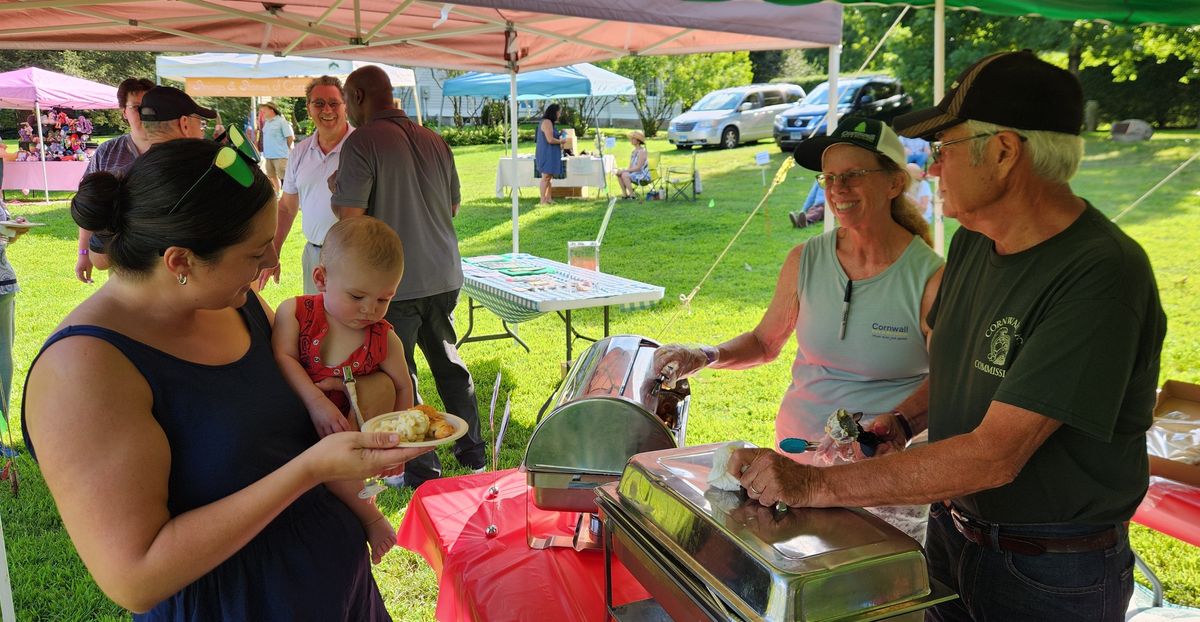
Above, Cornwall Park and Recreation volunteers serve locally sourced meals at Taste of Cornwall.
Sava Marinkovic

Above, Cornwall Park and Recreation volunteers serve locally sourced meals at Taste of Cornwall.
From Aug. 9 to 11, residents and visitors of “Connecticut’s Greenest Town” gathered to celebrate Cornwall Days — a weekend-long festival dedicated to “Cornwall and all its eccentricities.”
The townwide occasion, staged at a scatter of Cornwall institutions and green spaces across the town’s wooded sprawl, featured live music, theater, film, art, food, shopping, and more.
Spanning all three days and providing the weekend’s structural and cultural backbone was the enduring Rose Algrant Art Show, now in its 65th year and hosted at the Cornwall Consolidated School. Born in Constantinople (present-day Istanbul), Algrant emigrated to New York in 1940, shortly afterwards settling in Cornwall and fomenting a local artistic scene of writers, painters, illustrators, and printmakers.
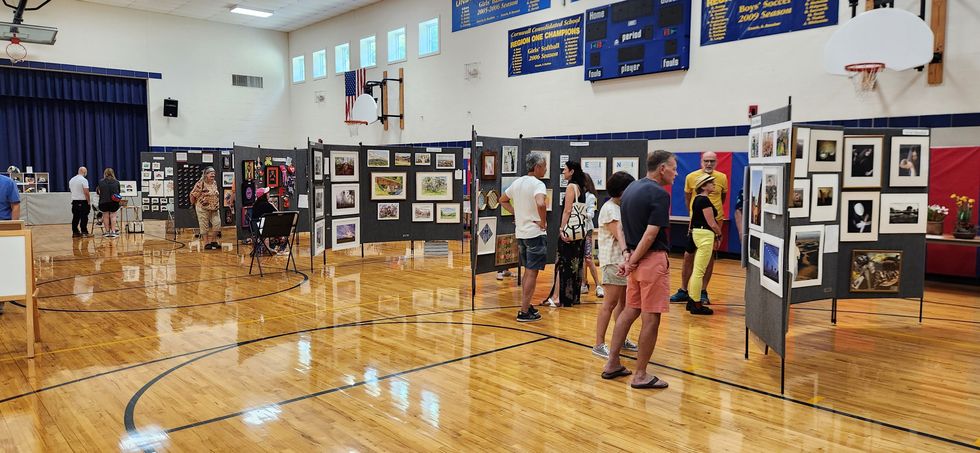
“Rose was quite the character,” said exhibit organizer and artist Ellen Moon. “She was small, but fierce,” — a fitting patron for the tiny but energetic town of Cornwall, which produced 51 artists for the show out of a population of less than 2,000.
“This year, we have even greater variety than usual,” continued Moon. Paneled display boards hung paintings, drawings, and photographs from around the Northwest Corner, rendered in a slew of styles and media, forming a thematic throughline that bound together many of the works. Also on display were sculptures, ceramics, furniture, puppets, shoes and jewelry creating an eclectic array of forms and disciplines very much in the spirit of Algrant’s ecumenical vision.
As the art show continued to draw out, other events around town were getting underway.
Although Friday’s family movie night, to have screened Disney-Pixar’s Toy Story outdoors at the Trinity Retreat Center, was postponed to Thursday, Aug. 15 due to inclement weather, live music continued at The Union in West Cornwall. As wind and rain rattled shops and residences in the neighborhood of Cornwall’s iconic covered bridge, patrons cozied up to weather the storm with guitarist Ava McCoy and pianist Maddie Rubin.
On Saturday, skies opened and cleared the way for a Taste of Cornwall on the Village Green, which Parks and Recreation Chair Michelle Shipp called a “highlight of the best things Cornwall has to offer.”
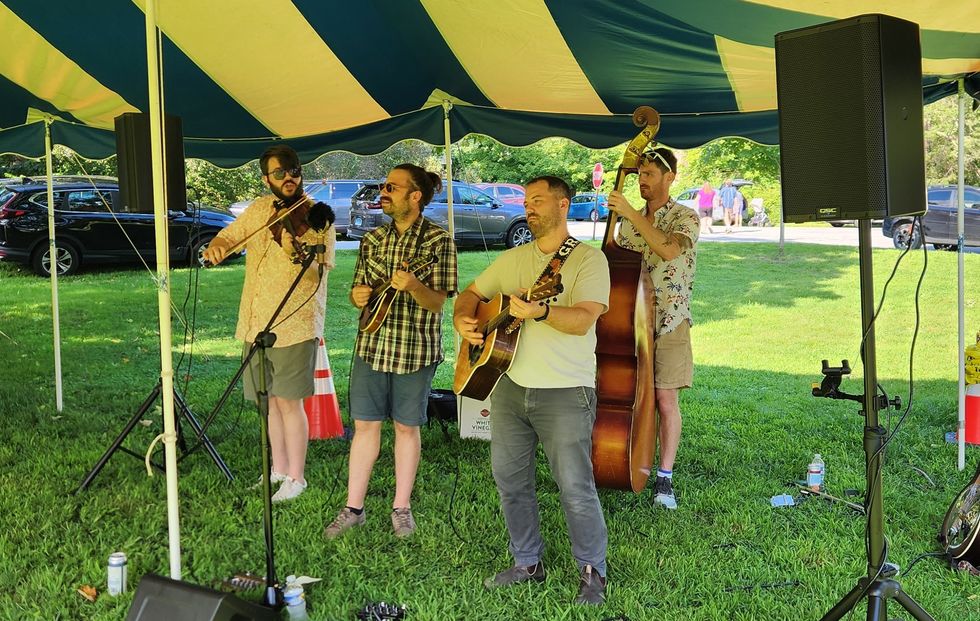
The main event, a farm-to-table tasting buffet, sourced ingredients from local growers, ranches, and dairies. Upon being outfitted with a glittering purple bracelet and handed an introductory slice of bruschetta, tasters were free to meander between colorfully-tented tasting tables at their leisure—so long as they followed the injunction to wait for seconds until after time was called.
And seconds certainly tempted from among the local fare: saucy ground beef tacos with meat and vegetables from Birdseye and Tanner Brooks Farm, Coltsfoot Farm, and Ridgway Farm; hot, sweet pigs in a blanket from Maple Hill Farm; macaroni gooey with cheese made from Calf & Clover Farm dairy; sweet and sour meatballs assembled with meat, jelly, eggs, and produce from Hurlburt Farm & Forestry, Coltsfoot, and Ridgway; and various salads courtesy of the aforementioned, as well as Buck Mountain Herbs.
Between tastings (or perhaps to wait out the service lines that began to curl across the green), visitors enjoyed placing bets in the quintessentially country cow chip raffle, playing lawn games, and browsing local vendors from among the event’s 36 sponsors—all Cornwall businesses. Drifting over the festivities was music performed by Americana string band Grain Thief, whose repertoire includes bluegrass, fiddle tunes, and old-timey interpretations of country classics. Redoubling the fair’s rustic ambiance, a small contingent of line dancers formed, broke, and reformed as tunes coursed from lively to somber and back again.
Come Sunday, the weekend concluded with rounds of live music and family theater.
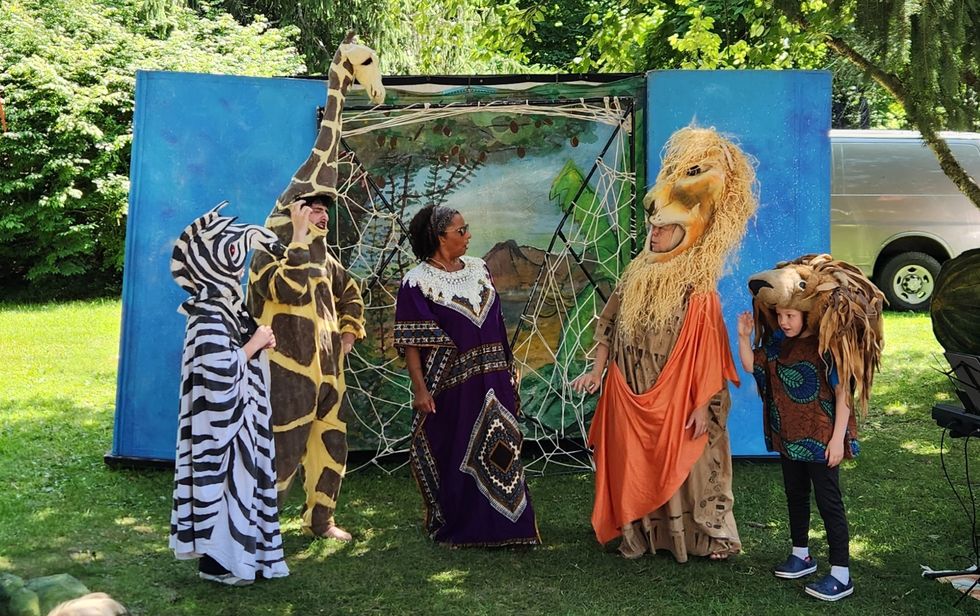
Up first, the Grumbling Gryphons Traveling Children’s Theater performed a colorful adaptation of West African folktale Anansi, the Trickster Spider at the Wish House in West Cornwall.
Calling on the tale’s African roots, Director Leslie Elias welcomed the crowd with a hearty Swahili “jambo, to this village and our global village!” Invited to “sing nice and loud and enjoy the show” by performer Daniel Saed, audience members roared, signed, buzzed, and mimed their way through the whimsical fable of a conniving spider-turned-folk hero.
After the show, Arieh and the Lions animated the Wish House lawn with their danceable pop and rock covers before DIY indie outfit Ruby Leftstep took the stage at Cornwall Market to close out the evening, the sun finally setting on Cornwall Days.
Housatonic Valley Regional High School, where the price of school lunch will increase to $4.00 beginning Jan. 5.
FALLS VILLAGE -- School lunch prices will increase at select schools in Regional School District No. 1 beginning Jan. 5, 2026, following a deficit in the district’s food service account and rising food costs tied to federal meal compliance requirements.
District officials announced the changes in a letter to families dated Monday, Dec. 15, signed by Superintendent Melony Brady-Shanley and Business Manager Samuel J. Herrick
Under the new pricing, lunches at Lee H. Kellogg School and Cornwall Consolidated School will increase by 25 cents to $3.75, while lunches at Housatonic Valley Regional High School will rise by 50 cents to $4.00.
According to the district, the food service program depends on revenue from lunch sales as well as federal reimbursement. Increased food costs and compliance requirements contributed to the shortfall during the 2024–2025 fiscal year.
School lunch prices have remained unchanged since the 2019–2020 school year, prior to the COVID-19 pandemic. In the years that followed, the district used COVID-19 relief funds to allow students to receive lunches at no cost.
Families who believe they may qualify for free or reduced-price lunch may apply at any time during the school year. Applications are available online for Housatonic Valley Regional High School, Lee H. Kellogg School and Cornwall Consolidated School.
The lunch price increase applies only to these three District No. 1 schools, as Housatonic Valley Regional High School oversees the food service programs at Lee H. Kellogg School and Cornwall Consolidated School. Other schools in the district operate independent food service programs and are not affected.
Runners line up at the starting line alongside Santa before the start of the 5th Annual North Canaan Santa Chase 5K on Saturday, Dec. 13.
NORTH CANAAN — Forty-eight runners braved frigid temperatures to participate in the 5th Annual North Canaan Santa Chase 5K Road Race on Saturday, Dec. 13.
Michael Mills, 45, of Goshen, led the pack with a time of 19 minutes, 15-seconds, averaging a 6:12-per-mile pace. Mills won the race for the third time and said he stays in shape by running with his daughter, a freshman at Lakeview High School in Litchfield.
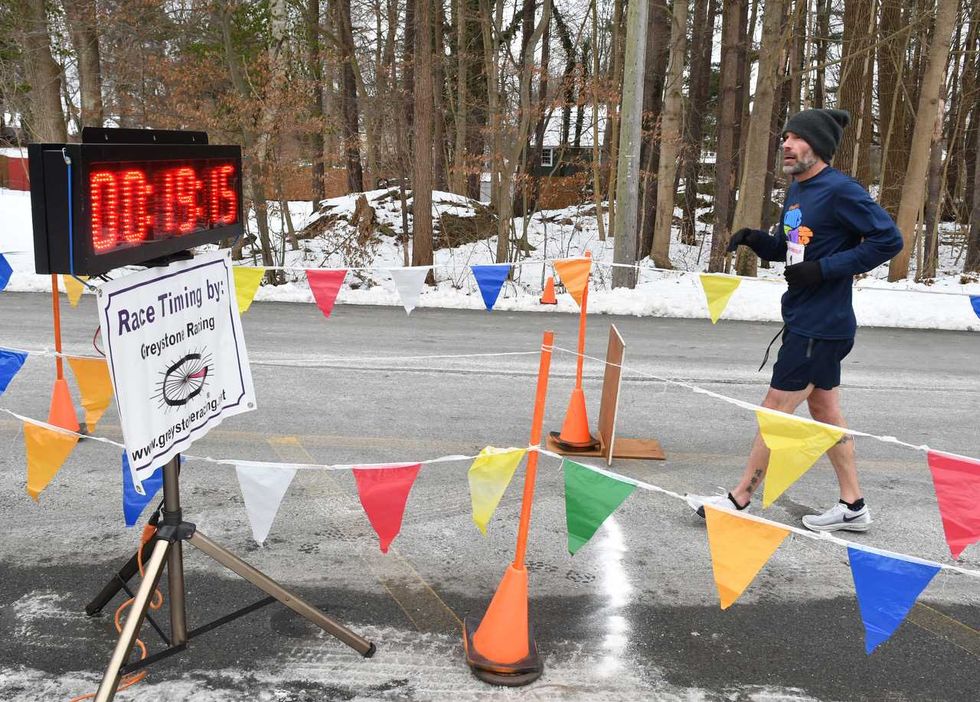
Don Green, 64, of Red Hook, New York, was second among male runners with a time of 21:17 and a 6:52-per-mile pace. Becky Wilkinson, 47, of Southfield, Massachusetts, was the first woman to cross the finish line with a time of 22:16, averaging a 7:11-per-mile pace. Wilkinson finished fourth overall.
Margaret Banker, 52, of Lakeville, finished second among women runners with a time of 23:59 and a 7:44-per-mile pace.
Runners came from all over Connecticut, Massachusetts and New York. One runner listed home as London, England. Many were members of the Run 169 Towns Society, a group that is dedicated to completing races in every one of Connecticut’s 169 towns. Elizabeth Smith, 32, of Manchester, a member of Run 169, said this was her 162nd town.
“I started 10 years ago,” Smith said. Her husband, Daniel, 33, has run races in 73 Connecticut towns, now including North Canaan. He was eager to know where to get a good cup of coffee after the race.
Santa, who got a head start on the group of runners but finished next to last with a time of 44:14, has been a feature in the North Canaan race since it started five years ago.
The 5K proceeds from a start in front of the North Canaan Elementary School on Pease Street to course around the Town Hall parking lot, up West Main Street past the transfer station to the state line and back. Cheryl Ambrosi, 45, of Danbury, was the last to cross the finish line with her dog Benji. “It was so much fun,” she said as she ended, even though she didn’t catch Santa.
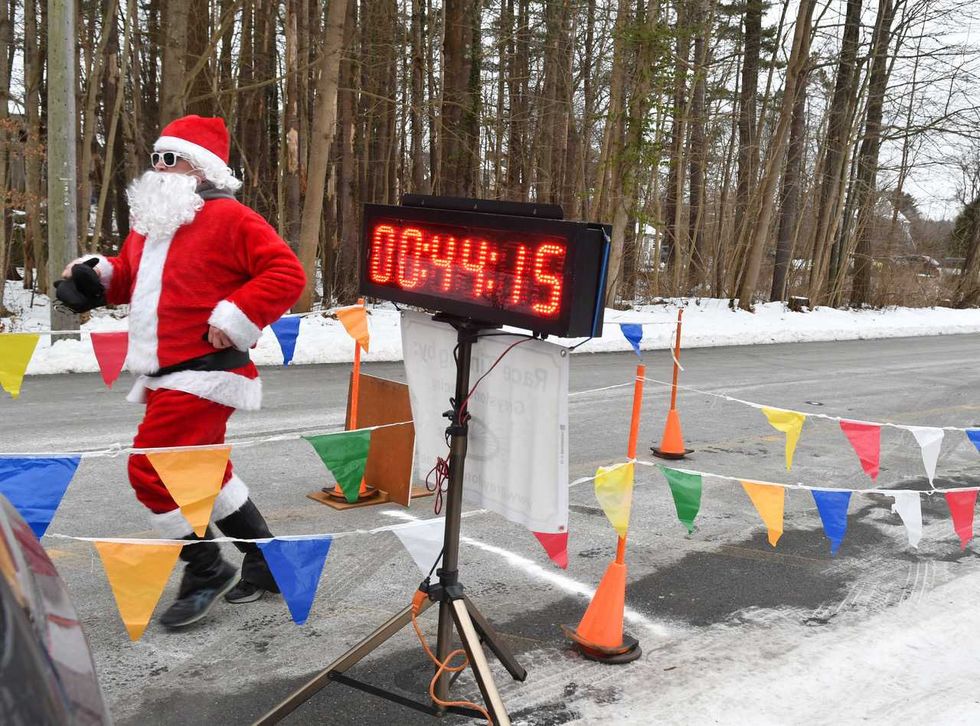
The Torrington Transfer Station, where the Northwest Resource Recovery Authority plans to expand operations using a $350,000 state grant.
TORRINGTON — The Northwest Resource Recovery Authority, a public entity formed this year to preserve municipal control over trash and recycling services in northwest Connecticut, has been awarded $350,000 in grant funds to develop and expand its operations.
The funding comes from the Department of Energy and Environmental Protection via its Sustainable Materials Management grant program. It is intended to help the NRRA establish operations at the Torrington Transfer Station as well as support regional education, transportation, hauler registration and partnerships with other authorities.
Founded by the City of Torrington in May 2025, the NRRA was established to oversee regional municipal solid waste management. Its creation followed a $3.25 million offer by USA Waste & Recycling to purchase the Torrington Transfer Station — a sale that would have privatized trash services in the region.
The proposed sale was initially approved by the MIRA Dissolution Authority, the entity responsible for dissolving the state’s former Materials Innovation and Recycling Authority, which owned the Transfer Station at the time. Before the transaction could close, the state intervened and directed that the facility’s operating permit be assigned to the NRRA to preserve a publicly controlled alternative.
MIRA has since dissolved, and the Transfer Station is currently operated by the state Department of Administrative Services. Many towns in northwest Connecticut have expressed interest in joining the NRRA. As of December, Torrington and Goshen were the only two municipalities in the authority.
At the Dec. 11 meeting of the Northwest Hills Council of Governments (COG) — a regional planning body representing 21 municipalities in northwest Connecticut — Director of Community and Economic Development Rista Malanca encouraged more towns to sign on.
“We need towns to join the Northwest Resource Recovery Authority to show your support, show this is what you want to do,” Malanca said.
Salisbury First Selectman Curtis Rand said his municipality is planning a town meeting in January to vote on a resolution to join the NRRA. Cornwall’s Board of Selectmen recently discussed scheduling a town meeting in the winter for the same purpose. Sharon, Falls Village and North Canaan have also expressed continued interest in pursuing a public option.
Kent is the northernmost member of the Housatonic Resource Recovery Authority, a regional solid waste authority representing 14 municipalities stretching south to Ridgefield. COG towns expressed interest in joining HRRA in 2024, but they were denied and set out to develop the NRRA.
“We also have been having conversations with the Capital Region Council of Governments and the Naugatuck Valley Council of Governments to think about how we can use existing resources, maybe some of these grant funds, to bring in shared resources or shared staffing that will help with some of the recycling coordinating efforts,” Malanca said.
With grant funds secured, NRRA aims to grow to a point that it can take over operations at Torrington Transfer Station to serve as a regional hauling hub. What happens to the trash after that has yet to be determined. Currently, it is being shipped to a landfill out of state. The existing municipal refuse hauling contracts that were established with the state expire in 2027.
The Salisbury Winter Sports Association (SWSA) will host its annual Junior Jump Camp, a two-day introduction to ski jumping, on Saturday and Sunday, Dec. 27 and 28, from 9 a.m. to 2 p.m. at Satre Hill in Salisbury.
The camp is open to children ages 7 and up and focuses on teaching the basics of ski jumping, with an emphasis on safety, balance and control, using SWSA’s smallest hill. No prior experience is required.
The cost is $50 per child and includes instruction and lunch on both days. For more information or to register, visit www.skireg.com/swsa-camp or email info@jumpfest.org